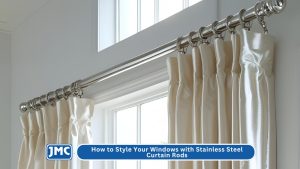Steel coil slitting is a method of metal cutting where very sharp rotary blades are used to cut large rolls or coils of sheet metal. They are cut longitudinally into the big coil to achieve straight lines, making shorter bars. As the coil runs through the slitter, circular blades are responsible for making the cuts. These are referred to as “knives” and can be transferred to provide for various widths. At a smaller width, the slit bits are cut while maintaining the same weight.
The initial coils are put on an uncoiler drum for uncoiling prior to being slit, before being flattened on a slit-ready leveler. It is possible to slice stainless steel into several different widths. Each application requires its own capacity for stainless steel coil slitting.
For both sheet and stainless steel split coils, slitting can be used equally well. Each job requires the blades to be crafted for the task at hand. When it comes to steel coil slitting, precision is the name of the game.
The high chromium content of the 430 Slitting Coils in Stainless Steel offers excellent corrosion resistance, especially under normal atmospheric conditions. It is capable of forming barriers of passivated chromium oxide that are both tough and robust. And its high content of chromium enables the 430 grade to especially easily self-renew this thin protective layer. SS 430 Slitting Coils are ductile and are produced by bending, pushing, writing, and heading.
For moderate corrosive conditions, Stainless Steel 430 Slitting Coils are ideally suited. Without molybdenum or nickel additives, stainless steel 430 is slightly less costly than 316. For non-critical indoor environments, this makes 430 Slitting Coils a good value choice. 430 stainless steel has good oxidation resistance, even at elevated temperatures.
In the temperature range of 1500 to 1900 degrees F, SS 430 coils can be heat-worked. If it has reached a uniform temperature, techniques such as forging will produce it. When exposed to high temperatures for too long, the 430 grade is susceptible to excessive grain growth, which decreases ductility. It should be easily air-cooled to room temperature. Slow cooling can cause fragility at less than 1000 degrees F. As heat treated, Stainless Steel 430 does not harden, while staying ductile.
Applications of Stainless Steel 430 Slit Coils
SS 430 Slitting Coils resist better cracking by chloride-induced stress corrosion than many ferritic sheets of steel. In the presence of diluted organic acids and many alkalis, it also holds well against corrosion. It also demonstrates strong nitric acid resistance, making it suitable for certain chemical applications.
SS 430 also provides excellent strength and a good finish, which is easy to maintain and low-cost. For this reason, stainless steel 430 is mostly chosen for its aesthetic quality over its corrosion resistance.
Stainless Steel 430 Slit Coils are used in many diverse applications.
Stainless Steel 430 Slitting Coils are used in many diverse applications. These include milk equipment, cryogenic coils, sanitary fittings and valves, chemical equipment, coal hopper linings, oil well philter screens, shipping drums, beer barrels, pressure vessels, evaporators, furnace components, automotive trim and molding, kitchen trim and equipment, television cones, tobacco machinery, hardware for builders, zippers, tubing, and more.
They also find their applications in various industries such as Chemical Industries, Electrical Industries, Food Industries, Generator Industries, Shaft Industries, Cement Industries, Gas Industries, Power projects, etc.






